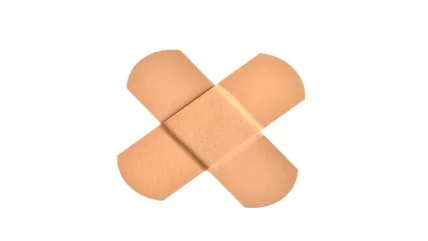
Why is topical oxygen therapy (TOT) getting so much attention recently?
Dr Schultz: Several major factors support the interest seen at wound care meetings and by wound care providers. Part of this is everybody accepts that oxygen is good and that we need more oxygen in most chronic wounds as a general approach. A major reason why a product like Natrox® O2 continuous TOT is becoming such an interesting and hot topic right now is because there wasn’t something comparable to this before. This is a unique, first-in-class type of wound care treatment option.
Why is oxygen critical for wound healing?
Dr Cole: Oxygen is important throughout all stages of the wound healing cascade. It’s the ultimate multitasker. We need oxygen to support energy production to keep a steady state when tissues are healthy. But when tissues are injured, we need more oxygen to support the processes of tissue repair and regeneration.
Why should clinicians incorporate TOT into their wound care practice?
Dr Cole: Adding topical oxygen therapy to our standard of care is long overdue. The evidence is mounting. Topical oxygen is effective, but it’s also very simple to use. It’s an adjunctive therapy, so it's not an ‘if/or’, it's an ‘and’. It fits into our clinical processes and care algorithms very well.
What’s the difference between continuous and intermittent topical oxygen therapy?
Dr Schultz: There are some theoretical advantages of having the continuous oxygen concentration increase compared to just intermittent oxygen. Part of the problem is the duration of the increased oxygen in the wound bed that occurs with intermittent oxygen delivery. The cells need oxygen continuously for their increased metabolism, increased proliferation, and migration, as well as maintain a high level of oxygen to improve the function of our immune cells and to stimulate the metabolically dormant bacteria in biofilms to make them more sensitive to agents such as antibiotics.
“You have to have something that works and that patients can actually use. That’s where topical oxygen fills a niche that is open right now.”
What’s the benefit of choosing continuous topical oxygen therapy (cTOT), such as Natrox® O2, over intermittent?
Dr Serena: Continuous diffusion of oxygen has a lot of advantages for patients. Clinically, it makes sense if you’re changing the microbiome – why not deliver it continuously, 24/7? There’s no statement saying one’s better than the other. But when it comes to a convenience standpoint, a continuous topical oxygen therapy product like Natrox® O2 is very easy. You have the wheel that you put on the wound, it stays there for up to a week at a time. Patient adherence and compliance with the regimen is very easy. A lot of therapies work because the patients can adhere to the regimen. It’s something we saw in the clinical trials as well.
What makes Natrox® O2 unique?
Dr Schulz: Natrox® O2 provides a continuous high concentration of oxygen at the surface of the wound so the oxygen can diffuse into the wound bed and the supporting tissues. The unique aspect of Natrox® O2 is that it doesn’t have a big oxygen cylinder with a tube output above the wound. Instead, it has a small, mobile phone-sized generator that generates oxygen from an electrolysis process with water, and then delivers the oxygen down the tube to the dressing on the wound. Now, the great thing is it does this continuously. This is a much better physiological way to try to increase the important roles that oxygen plays in wound healing – and especially in chronic wounds.
What impact have you seen Natrox® O2 make on patients receiving the therapy?
Dr Cole: Living with a chronic wound is very demanding and can be somewhat restrictive – clinic appointments, dressing changes, testing – all of this dictates the patients’ lives and can take many hours out of their day. The fact that patients are mobile with continuous topical oxygen therapy is really huge. It’s less restrictive, it supports the patient’s ability to not only continue their activities of daily living – laundry and such – but they can also participate in their social interactions. This can have a considerable positive impact on our patients' psychological wellbeing. It can help to reduce feelings of depression, isolation, anxiety and stress, and increase their quality of life. Subsequently, it makes them more adherent to the treatment plan, so they get better results. It's a win-win for all involved.
Where do you see TOT’s future in clinical practice?
Dr Serena: Clinicians are seeing the efficacy of topical oxygen in combination with the convenience and ease of use of topical oxygen therapy. It’s not just enough to have something that works; you have to have something that works and that patients can actually use. That’s where topical oxygen fills a niche that is open right now. In the next year, there will be an uptake in the use of topical oxygen. Beyond this year, topical oxygen will become part of the toolbox of wound care specialists. The convenience will allow more patients to receive topical oxygen and lead the way to TOT becoming a mainstay therapy.





